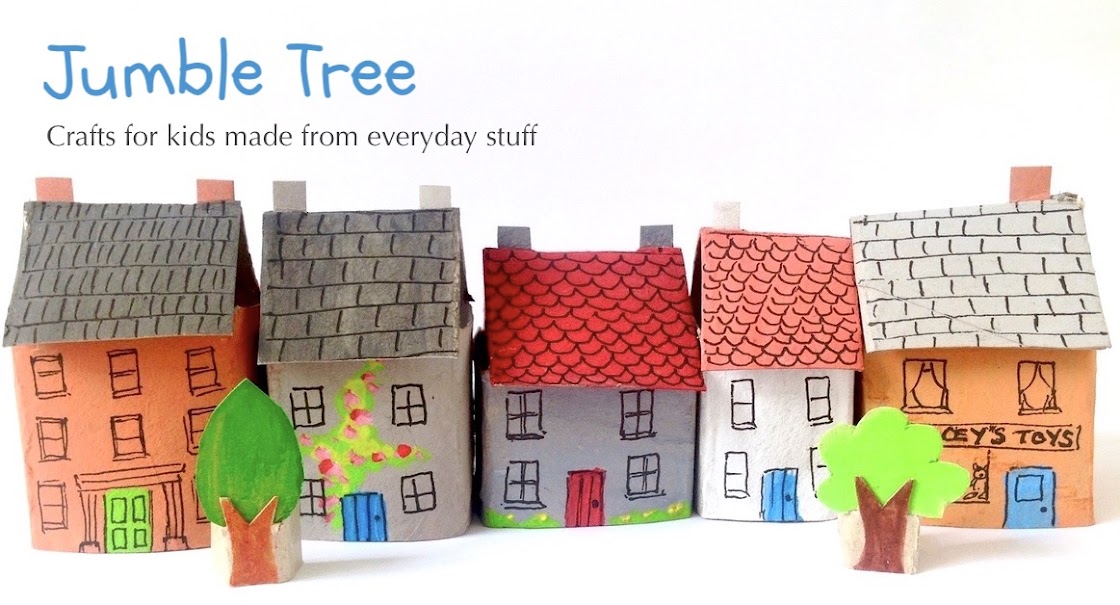To celebrate their return, we've been making mini ones from egg boxes (of course!) Their noses aren't quite as narrow and pointy as the real thing, but think there's enough of a likeness?
If you want to have a go, you will need:
An egg carton
red and white paint
fine black felt tip or gel pen
brown wool
glue
glitter
sequins
general purpose scissors
Straight-edged nail scissors (optional - adult supervision needed)
1 Roughly cut out the two middle cones from the egg box. This makes them easier to work with.
3.For the legs, cut up the middle of one of the cone sides, about a third of the way. Then wiggle and turn your scissors to cut across to the corner, and just a little beyond. Do the other side too, so you've cut a sort of 'T' shape. Now repeat this 'T' shape on the opposite side of the cone.
4. To form the legs, the cut edges in the middle towards each other and squeeze each side into a rounded leg shape. If they're too big, snip off a small piece of card. There's no need to use glue. The legs should hold and the body should be stable. (Snip the bottom of the legs if the body is a little wobbly)
5. For the head, take the other egg box cone and use a pencil and ruler to mark about 2cm from the top on all sides. Join the marks with a line. Choose which side you'd like for the face and draw round Clanger ears on the corners, so part of the ear is on the adjacent side.
7. Because the egg box cardboard is prone to ripping, you may need to snip into the bottom of the ears, before gently pushing them forward. Round off the pointy corner if you want to.
8. On the underside of the head, cut up the two back corners, almost to the end, bend back this flap of card and cut it off. Glue the head onto the body. Don't push it right down onto the cone. There should be a little gap at the back, between the top of the cone and the top of your Clanger's head.
9. For the arms, cut a thin strip of card from the egg carton lid, about 5cm/2in. long.
10. Painting time - mix plenty of white and just a little red to get a nice pale pink colour and paint the whole of the body and head, as well as the arm strip.
11. When dry, fold the arm strip in half and cut along the crease. Use small scissors to snip long pointy fingers in the ends if you like.
Then, either glue the arms either side after you've finished decorating your Clanger, or, use the nail scissors to make slots either side (keep them closed, press down firmly and twist until the tip pierces through the card, then cut slots)
Wiggle the scissors in and out a few times so it's easier to push the arms in. Check they fit but then leave them out while you decorate your Clanger.
12. Two decorating options - either glue on sequins (we had some large ones which were perfect), or, cover the body with an even, thin layer of glue and sprinkle glitter! (Make sure you don't get glue on the head though!)
13. For the hair tuft, cut a little piece of wool, separate the strands and stick it down between the ears. Dot eyes on top near the ears with a fine black felt tip pen of gel pen and push the arms back in place or glue them on.
18. To add a bow, fold a small piece of paper over and draw half a small bow on the fold. Cut out, open up and glue in place.









































.jpg)



.jpg)
.jpg)




